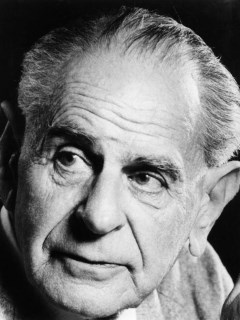
Publication details
Publisher: Springer
Place: Berlin
Year: 1987
Pages: 129-145
Series: Topics in Contemporary Semiotics
ISBN (Hardback): 9781475797022
Full citation:
, "Karl Bühler", in: Classics of semiotics, Berlin, Springer, 1987


Karl Bühler
pp. 129-145
in: Martin Krampen, Klaus Oehler, Roland Posner, Thomas Sebeok (eds), Classics of semiotics, Berlin, Springer, 1987Abstract
People who undertake to reassess the diacritic flavor and scholarly quality of great figures of the past soon find themselves engaged in a free-for-all from which they are more likely than not to emerge by delineating the distinctive features of merely their own contributions. This process of self-definition may apply with special force when we attempt to reinterpret personalities who flourished in the decades following the political and cultural wreckage of the Habsburg Hausmacht—an epoch of imperial decay that has justly been described as "always desperate, but never serious"—because some of us were ourselves saturated in that selfsame ambience throughout our formative years. The ensuing era was one of infinite possibilities for the building of novel institutions and social practices, in brief, the new Austrian Republic. In this modern Austria, plenty of opportunities existed for intellectuals to put an effective system of social democracy into working order, something which had been unattainable during the times of Habsburg ultraconservatism. It was in this unprecedented atmosphere of social crisis that Bühler, with his ideas (germinated a decade or so earlier) about "imageless thought" and "rule awareness," began to play the role of chief theoretician in the movement underlying curricular reform in Austria (Bartley, 1973:144). Karl Popper and Ludwig Wittgenstein were among the budding giants who enrolled in the resulting teacher-training courses (Janik and Toulmin, 1973:288). Much of this constructive development was, of course, poignantly swept away with the coming of the Second World War. Still, the exercise of looking back upon the intervening decades is salubrious, for it at least reduces our complacency and melts away the comforting fat of self-delusion about the total innovativeness of our surviving contemporary heroes. As we thus casually journey back to the Vienna of the interwar period, we must, withal, be mindful of two basic facts: first, that we cannot escape the tendency of all travelers, whether in space or in time, to seize upon a dramatic moment here and there in order to generalize from this by the imposition of our own prejudices upon each such vivid flash; and second (to paraphrase your own extraordinary satirist, Karl Kraus, about his contemporary bourgeois Vienna), that this city was, during the time of Bühler's residence, already a proving grounfd for world destruction. George Steiner (1979:101) summed it up well:"As the waltz tune has it, Wien, Wien, nur du allein. Vienna was the capital of the age of anxiety, the hub of Jewish genius, and the city from which the Holocaust would seep."All this was foreshadowed in the scientific arena, with rare subtlety, in Bühler's Die Krise der Psychologie, first published in book form two years before the global economic catastrophe of 1929 (see also Wellek, 1959)
Cited authors
Publication details
Publisher: Springer
Place: Berlin
Year: 1987
Pages: 129-145
Series: Topics in Contemporary Semiotics
ISBN (Hardback): 9781475797022
Full citation:
, "Karl Bühler", in: Classics of semiotics, Berlin, Springer, 1987




